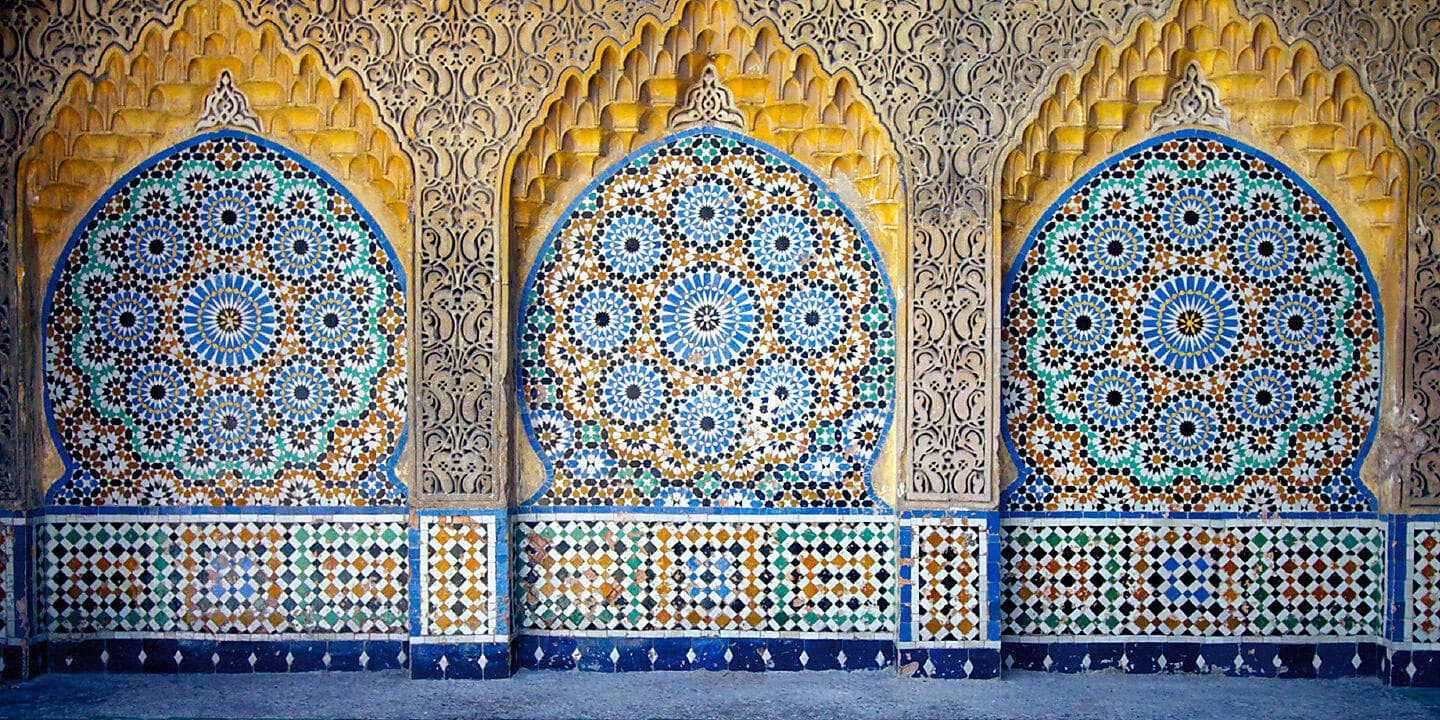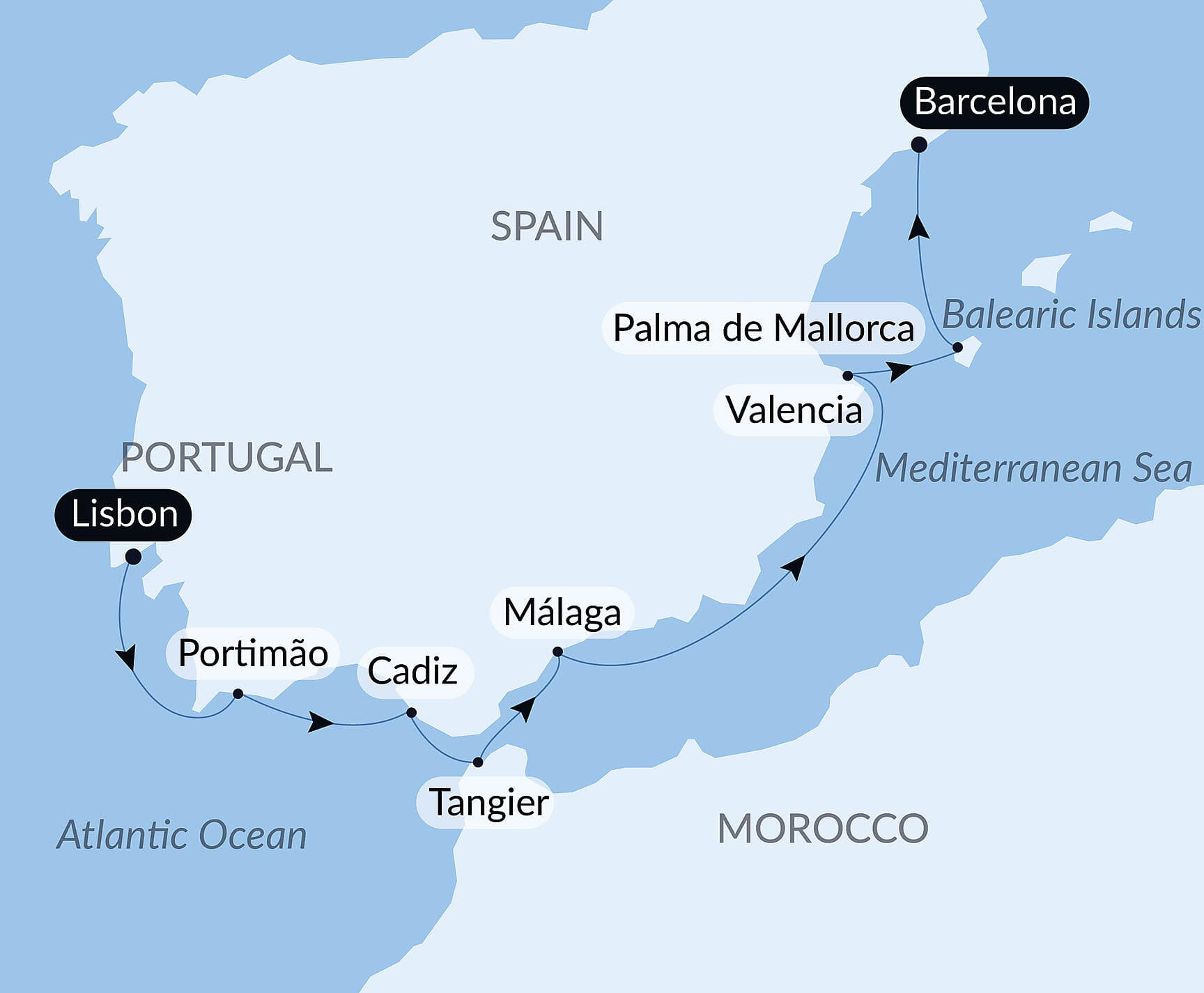The Mediterranean
3 reasons why
Discover the Mediterranean
92 cruises in Mediterranean
Cruising the Dalmatian Coast and the Ionian Sea: Venice to Athens – with Smithsonian Journeys
From
Venice (Italy)
To
Athens (Greece)
8 nightsaboard the shipLe Dumont d'Urville
Next departure
From
Valletta (Malta)
To
Antalya (Turkey)
10 nightsaboard the shipLe Dumont d'Urville
Next departure
Offer(s)
Back to back offer, Free solo supplement, Holiday Offer, PONANT Bonus 20%
From
AU$10,990 /person*
From
Antalya (Turkey)
To
Valletta (Malta)
10 nightsaboard the shipLe Dumont d'Urville
Next departure
Offer(s)
Back to back offer, Free solo supplement, Holiday Offer, PONANT Bonus 20%
From
AU$10,990 /person*
From
Valletta (Malta)
To
Valletta (Malta)
8 nightsaboard the shipLe Dumont d'Urville
Next departures
From
Lisbon (Portugal)
To
Barcelona (Spain)
10 nightsaboard the shipLe Champlain
Next departure
Offer(s)
Back to back offer, Free solo supplement, Holiday Offer, PONANT Bonus 25%
From
AU$10,350 /person*
From
Nice (France)
To
Nice (France)
7 nightsaboard the shipLe Ponant
Next departures
From
Nice (France)
To
Monaco (Monaco)
5 nightsaboard the shipLe Bougainville
Next departure
From
Nice (France)
To
Nice (France)
7 nightsaboard the shipLe Ponant
Next departures
Cruising the Aegean: Turkey and the Greek Isles – with Smithsonian Journeys
From
Athens (Greece)
To
Istanbul (Turkey)
7 nightsaboard the shipLe Boréal
Next departures
From
Valletta (Malta)
To
Venice (Italy)
8 nightsaboard the shipLe Bougainville
Next departure
Offer(s)
Back to back offer, Free solo supplement, Holiday Offer, PONANT Bonus 25%
From
AU$11,720 /person*
Croatia's Dalmatian Coast by Sea – with Smithsonian Journeys
From
Venice (Italy)
To
Dubrovnik (Croatia)
7 nightsaboard the shipLe Bougainville
Next departures
From
Nice (France)
To
Nice (France)
8 nightsaboard the shipLe Dumont d'Urville
Next departure
Offer(s)
Back to back offer, Free solo supplement, Holiday Offer, PONANT Bonus 25%
From
AU$10,670 /person*
*Price is per person, based on double occupancy, based on availability, and subject to change at any time. The category of stateroom to which this price applies may no longer be available.
Inspiration
The must-sees of the Mediterranean
See all cruises in the Mediterranean
Explore

Stay inspired. Discover even more.
Upcoming departures, new experiences, interviews and scouting stories... Order or download our brochures and feel inspired for your next escape.
Ports of call in Mediterranean
The enchanting shores of the Mediterranean can be discovered in all seasons: from Corsica to the Cyclades via Sicily, from the Alhambra to the Balearic Islands, from the serene Venice to the beautiful Dubrovnik, each stopover holds surprises and amazement for you. At the pace of your cruise, between Barcelona and Istanbul, let yourself be carried away by the millenary history of the cradle of the world and the generous nature of the Mediterranean lands.
Discover our cruises in Mediterranean going through
- Adamas, Milos (Greece)
- Agropoli (Italy)
- Ajaccio, Corsica (France)
- Alanya (Turkey)
- Alghero, Sardinia (Italy)
- Algiers (Algeria)
- Almeria (Spain)
- Amalfi (Italy)
- Amorgos (Greece)
- Ancona (Italy)
- Annaba (Algeria)
- Antalya (Turkey)
- Antibes (France)
- Arrecife de Lanzarote, Canary Islands (Spain)
- At sea (-)
- At sea aboard Le Ponant (-)
- Athens (Greece)
- Athens (Lavrio) (Greece)
- Barcelona (Spain)
- Bari (Italy)
- Bilbao (Spain)
- Bol (Croatia)
- Bonifacio, Corsica (France)
- Bordeaux (France)
- Bozcaada (Turkey)
- Brest (France)
- Cadiz (Spain)
- Caen (France)
- Cagliari, Sardinia (Italy)
- Calvi, Corsica (France)
- Canakkale (Turkey)
- Cannes (France)
- Cartagena (Spain)
- Casablanca (Morocco)
- Cassis (France)
- Catania, Sicily (Italy)
- Civitavecchia (Rome) (Italy)
- Corfu (Greece)
- Cowes (United Kingdom)
- Crossing the Corinth Canal (Greece)
- Dartmouth (United Kingdom)
- Delos (Greece)
- Dubrovnik (Croatia)
- Figueira da Foz (Portugal)
- Fiskardo, Cephalonia (Greece)
- Gaeta (Italy)
- Galaxidi (Greece)
- Gallipoli (Italy)
- Gibraltar (Gibraltar)
- Giglio (Italy)
- Gozo (Malta)
- Guernsey, Channel Islands (Guernsey)
- Gulf of Roccapina (France)
- Gulf of Sant'Amanza, Corsica (France)
- Gythio (Greece)
- Heraklion, Crete (Greece)
- Hvar (Croatia)
- Hydra (Greece)
- Ibiza, Balearic Islands (Spain)
- Istanbul (Turkey)
- Itea (Greece)
- Katakolon (Greece)
- Kavala (Greece)
- Komiza, Vis Island (Croatia)
- Korcula (Croatia)
- Kotor (Montenegro)
- Kusadasi (Turkey)
- Kythnos (Greece)
- L'Île-Rousse, Corsica (France)
- La Coruña (Spain)
- Lagos (Portugal)
- Las Palmas de Gran Canaria, Canary Islands (Spain)
- Leixões - Porto (Portugal)
- Limnos Island (Greece)
- Lipari, Aeolian Islands (Italy)
- Lisbon (Portugal)
- Livorno (Italy)
- London (United Kingdom)
- Mahon, Balearic Islands (Spain)
- Marbella (Spain)
- Marseille (France)
- Melilla (Spain)
- Menorca (Spain)
- Menton (France)
- Mljet (Croatia)
- Monaco (Monaco)
- Monemvasia (Greece)
- Monopoli (Italy)
- Motril (Spain)
- Mykonos (Greece)
- Málaga (Spain)
- Nafplion (Greece)
- Naples (Italy)
- Nice (France)
- Oran (Algeria)
- Otranto (Italy)
- Palermo, Sicily (Italy)
- Palma de Mallorca, Balearic Islands (Spain)
- Parga (Greece)
- Paros (Greece)
- Patmos (Greece)
- Paxos (Greece)
- Peniscola (Spain)
- Piran (Slovenia)
- Ploce (Croatia)
- Polyaigos (Greece)
- Ponza (Italy)
- Port-Vendres (France)
- Portimão (Portugal)
- Porto Empedocle, Sicily (Italy)
- Porto Ercole (Italy)
- Porto Santo Stefano (Italy)
- Porto Venere (Italy)
- Portoferraio, Elba (Italy)
- Portofino (Italy)
- Primosten (Croatia)
- Propriano, Corsica (France)
- Pucisca, Brac Island (Croatia)
- Pula (Croatia)
- Pylos (Greece)
- Quiberon (France)
- Rab (Croatia)
- Ravenna (Italy)
- Reggio di Calabria (Italy)
- Rhodes (Greece)
- Rijeka (Croatia)
- Roccapina, Corsica (France)
- Rovinj (Croatia)
- Sailing Guadalquivir (Spain)
- Sailing along Mount Athos (Greece)
- Sailing in front of Stromboli (Italy)
- Sailing in the Bay of Kotor (Montenegro)
- Sailing in the Dardanelles (Turkey)
- Sailing in the Santorini Caldera (Greece)
- Saint-Florent, Corsica (France)
- Saint-Malo (France)
- Saint-Tropez (France)
- Salerno (Italy)
- San Sebastian de la Gomera, Canary Islands (Spain)
- Sanguinaires Islands (France)
- Santa Cruz de Tenerife, Canary Islands (Spain)
- Santa Margherita Ligure (Italy)
- Santorini (Greece)
- Saranda (Albania)
- Serifos (Greece)
- Setúbal (Portugal)
- Sevilla (Spain)
- Sipan Island (Croatia)
- Skiathos (Greece)
- Sorrento (Italy)
- Spetses (Greece)
- Split (Croatia)
- Stari Grad, Hvar Island (Croatia)
- Symi (Greece)
- Syracuse, Sicily (Italy)
- Sète (France)
- Tangier (Morocco)
- Taormina, Sicily (Italy)
- Tarragona (Spain)
- The Brijuni Islands (Croatia)
- Thessaloniki (Greece)
- Tinos (Greece)
- Tivat (Montenegro)
- Total Eclipse Observation (-)
- Trapani, Sicily (Italy)
- Trogir (Croatia)
- Tunis (Tunisia)
- Valencia (Spain)
- Valletta (Malta)
- Venice (Italy)
- Vieste (Italy)
- Vigo – Santiago de Compostela (Spain)
- Villefranche-sur-mer (France)
- Vis, Vis Island (Croatia)
- Volos (Greece)
- Zadar (Croatia)
We recommend planning your Mediterranean cruise between May and early November. This period offers ideal weather conditions, with mild temperatures and calm seas that make it easier to explore the hidden treasures of the Mediterranean.
Let yourself be seduced by the most popular destinations that embody the very essence of exploration in the Mediterranean. Make a stop in the Cyclades, where each island reveals a breathtaking landscape. Not far away, the Aegean Sea opens the doors to more secret Greek islands, to discover their cultural and natural heritage. Also, explore the Amalfi Coast, a jewel of Italy, with its dizzying cliffs and picturesque villages perched above the sea, or Croatia, with stops like Hvar and Dubrovnik. The Bay of Kotor in Montenegro, a true fjord of the Mediterranean, amazes with its beauty. Heading south, Sardinia and Sicily welcome you with their millennia-old heritage and wild landscapes. And for those seeking the perfect harmony between relaxation and cultural exploration, stops in Corsica or the Balearic Islands are a must.
On board PONANT cruises in the Mediterranean, each stop is an invitation to discovery and wonder. Your explorations take you to the heart of major cities and to the discovery of UNESCO World Heritage sites. Exceptional activities are scheduled at each of these stops, such as: a visit to the archaeological site of Pompeii, a concert of Sardinian polyphonic songs in Cagliari, a performance of Moreška in Croatia, an ascent of Mount Etna, truffle hunting and tasting departing from Rovinj...
PONANT's human-sized ships allow you to access confidential and authentic ports to discover lesser-known gems of the Mediterranean. You can embark even off-season, to travel when the crowds are less dense. On board, experience unique experiences thanks to the prestigious partnerships that PONANT has forged: yoga classes, concerts, festivals, conferences, and tastings organized by passionate experts. Through the Kid Explorers Club in partnership with the Maud Fontenoy Foundation, the youngest are invited to participate in activities focusing on raising awareness about ocean protection.
On board PONANT cruises in the Mediterranean, comfort and refinement are the key words of a service that meets your most demanding expectations. Your experience begins with an offer of refined dining, as well as a bar included at any time of the day (excluding the Premium menu). Depending on the suite you book, the services of a butler are included, ensuring special attention to every detail of your stay. 24-hour room service is also available, allowing you to enjoy a meal or a drink at any time, in the privacy of your cabin. The professional and discreet crew diligently ensures your comfort. To stay connected with the world, unlimited wifi is included.
























